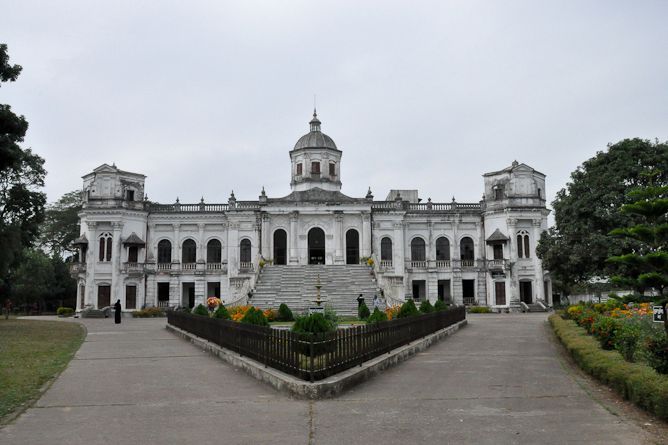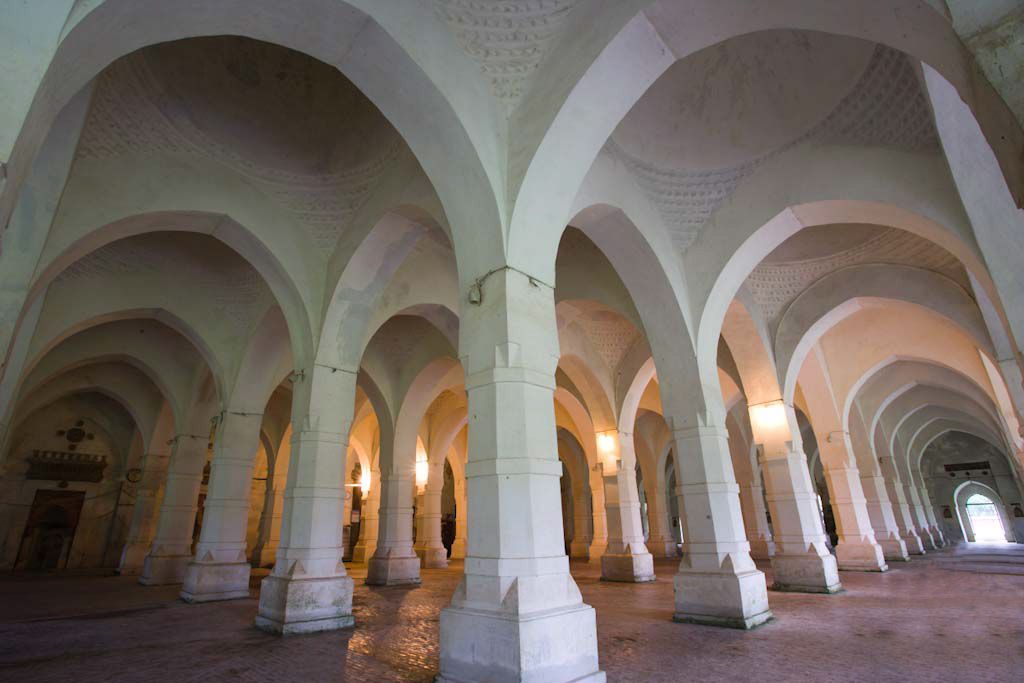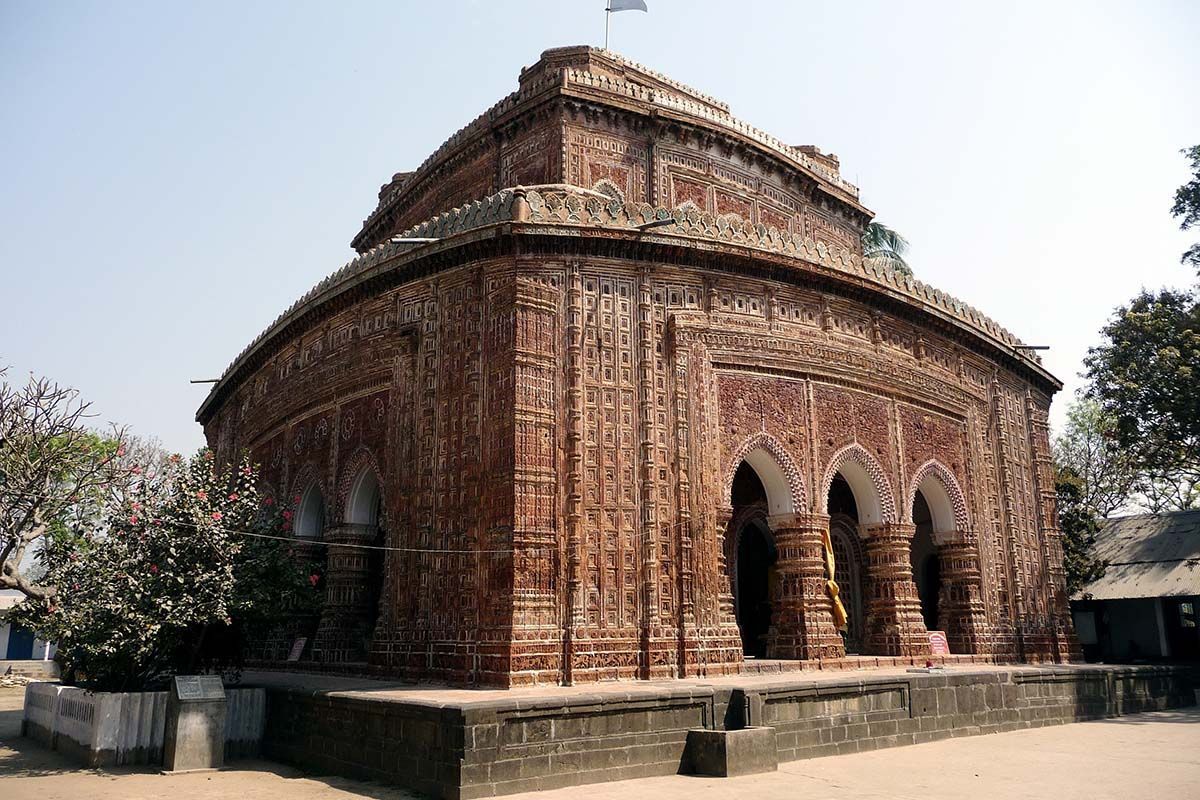Places of Interest



DHAKA
The rather crowded capital city of Bangladesh sits on the bustling north bank of the Buriganga River, roughly in the center of the country. Here the lights are as bright as they get in Bangladesh, and there’s a range of goods and services lacking elsewhere in the country.
The oldest section of the city runs along the north bank of the waterfront and was developed when Dhaka was a significant Moghul trading center. A must-see in the Old City is the area between the two main water transport terminals, Sadarghat and Badam Tole where the panorama of river life on the Buriganga is particularly fascinating. This area is always crowded with people and water craft of every type. Along the waterfront is the old pink baroque-style palace, Ahsan Manzil, which although relatively small, houses one of the regions more interesting museums, Lalbag Nature.
Dhaka’s premier attraction is Lalbagh Fort, an unfinished fort dating from 1678 located in the Old City. The area also contains a couple of attractive mosques, including Hussain Dalan. The National Museum is north of the Old City in the old European zone known as Modern City. It has fascinating displays of Bangladesh’s Hindu, Buddhist and Moghul past and an extensive collection of fine folk art and handicrafts.
Most of the cheaper accommodation and restaurants are in the Modern City of Central Dhaka. This area also contains the Motijheel Commercial Area, the business district where most of the banks, travel agents and airline offices are located. Dhaka is the rickshaw capital of the world, with over 300,000 colorful painted rickshaws in operation. Taking a ride in one is as essential as catching a red double-decker bus in London.
SUNDARBAN MANGROVES
The Sundarbans are the largest mangrove forest in the world, stretching 80km into the Bangladeshi hinterland from the coast. They cover an area of 38,500 sq. km, of which about one-third is water. It is optimistically estimated that there are around 400 Royal Bengal tigers (of which you’ll probably never see one — and be grateful for it as they are man-eaters) and several thousand spotted deer in the area. Realistically don’t expect to see much other than a few crocs sunbathing in the mud and a few species of migratory birds in the winter as the tigers usually stay well out of sight. Either to or from Dhaka, the ‘Rocket’ or colonial paddle-wheeler is the most exciting way to arrive approach the area. To get deep enough into the mangroves it takes several days of river journey each way.
CHITTAGONG
The second largest city in Bangladesh sits on the bank of the Karnaphuli River and has an interesting old waterfront area known as Sadarghat which reflects the importance of river trade to the city’s growth. Nearby is the old Portuguese enclave of Paterghata which remains mostly Christian and has a colonial church. The Shahi Jama-e-Masjid and Qadam Mubarak Mosque are two of the most impressive buildings in the city. It’s also worth visiting the Ethnological Museum in the Agrabad area which has quite interesting displays on Bangladesh’s tribal peoples. There are good views and cooling breezes from Fairy Hill in the British City in the northwestern sector of the city. The markets (Reazuddin Bazaar) and the goldsmith lane (Hazari guli) are really worth a visit — and a sampan river journey is a must. North of the city is the ship-breaking yards, a real experience in recycling if you’re willing to breath in burning bilge and asbestos. A day or two here is plenty enough time to see everything.
COX’S BAZAR
Bangladesh’s main beach resort is near the Myanmar border in an area where Rohingya refugees have settled to escape persecution in Myanmar over the centuries. It has a slight Burmese Buddhist flavor and has basic amenities to service the visitors attracted by its enormous expanse of shark-free beach. Get out of the ‘hotel district’ and wander around the tribal and residential areas. South of Cox’s Bazar is secluded beaches where having a swim can still be a private experience. A short speed boat journey away is Maheskhali Island, where there is an ancient Hindu temple. During February there is a huge gathering for Siva Ratri here and there are Buddhist shrines in the tribal area where you can see and purchase beautiful handloom cloth directly from the tribal women weavers. You can also observe sea salt production and shrimp farming.
MAINAMATI
This 8th-century Buddhist Vihara was formerly one of the biggest Buddhist monasteries south of the Himalayas. Although in an advanced state of decay, the overall plan of the temple complex is easy to figure out and includes a large quadrangle with the monks’ cells forming the walls and enclosing a courtyard. From the center of the courtyard rise the remains of a stupa which once dominated the surrounding countryside. The monastery’s recessed walls are embellished with well-preserved terra-cotta bas-reliefs and a small museum houses a representative display of the domestic and religious objects found during excavations. It is just a few minutes from Comilla off the main Dhaka-Chittagong highway and can be visited on the way.
ST. MARTIN’S ISLAND
This small coral island is about 14km southwest of the southernmost town of Teknaf and is off the mainland. It is a quaint tropical paradise coconut palm fringed beaches and bountiful marine life. There’s nothing more strenuous to do here than soak up the sun and drink green coconut water, but it’s a clean and peaceful place without even a mosquito to disrupt your serenity. It’s possible to walk around the island in a few hours as it measures only eight sq.km, shrinking to about five during high tide. Most of island’s 5,000-odd inhabitants live primarily from fishing and close to the boat landing at the island’s wholesale fish market. A ferry leaves Teknaf for St. Martin every morning (as per tides) and takes around 3 hours. It’s difficult to go and return in one day, so plan to stay at least one night. The sole 8-room hotel is rather costly, and the only alternative is to stay with a local retired teacher in his most humble ‘guest room’.
CHITTAGONG HILL TRACTS
In the far southeastern corner of Bangladesh, bordering Myanmar (Burma) the Chittagong Hill Tracts (CHT) cover three distinct districts of Khagrachari, Rangamati and Bandarban. Decidedly untypical of Bangladesh in topography and culture, here you find steep jungle hills, Buddhist tribal peoples and is a real ‘must’ to be visited. It’s quite a relief from the flat lowlands of Bengal, to relax and get away from the crowds. The Tracts are about 60km east of Chittagong and have recently been opened to the public are an idyllic place to visit. The region comprises a mass of hills, ravines and cliffs covered with jungle, bamboo, creepers and shrubs. There are four main valleys formed by the Karnaphuli, Feni, Sangu and Matamuhuri rivers. This area is our specialty.
These are home to about a half a million indigenous peoples of 14 unique tribes. Much of the traditional lifestyle is still preserved – tribal kings, village headmen, self-sustaining crafts, a natural lifestyle – all in a rich, still pristine foothill ecological environment. This region has only recently become accessible with the signing of an internationally acclaimed accord between the indigenous people and the government. As the few local hotel registers will confirm, only a handful of foreign tourists have yet had the fortune to visit to the Chittagong Hill Tracts, truly a unique experience to treasure.
RANGAMATI
A lush and verdant rural area belonging to the Chakma tribe, visitors are welcome here and to see Kaptai Lake. The lake is ringed by thick tropical and semi-evergreen forests and looks like nothing else in Bangladesh. While the lake itself is beautiful, the thatched fishing villages located on the Rangamati Lake shore are what make a visit really special. Boats which visit the villages leave from Rangamati. Bring your swimming gear because you can take a plunge anywhere. The town itself can get crowded so avoid holidays and Fridays when hundreds of Bengali ‘picnickers’ converge in crowded buses, each competing with the loudest cinema music screaming tape systems mounted on the roofs.
BANDARBAN
The capital of the hill district of the same name and home to the Bohmong tribal king, this place is much smaller and quainter than Rangamati. It is the base for traveling south by country boats down the Sangu river to Ruma, Thanchi and points beyond. Tuesday is when the weekly market is held where you’ll see tribal folk from miles around. There is a large Buddhist water festival every April.
ALIKADAM
A very small market town (Monday is the weekly market), this is where you can take a boat up the Matamurhi river and hike to visit interior tribal villages. There is a three-room government guest house here that offers basic facilities. Bangladesh Ecotours runs a small ecolodge about 20 minutes from the bazaar area and arranges homestays with Tripuri, Tanchangya, Marma and Mru families. There are several small villages within a half-day of walking.
